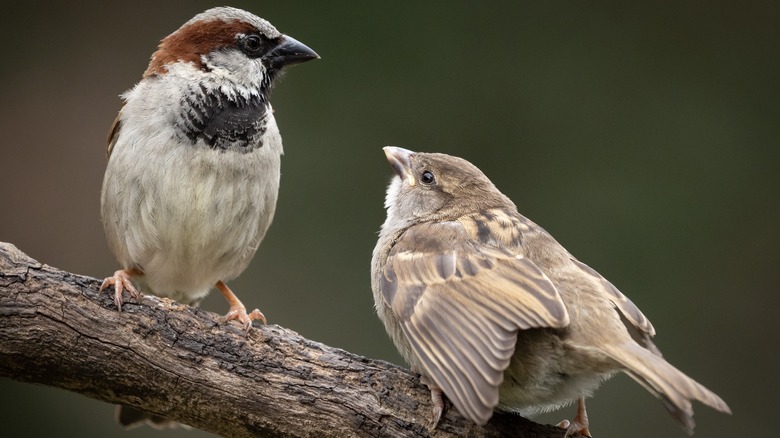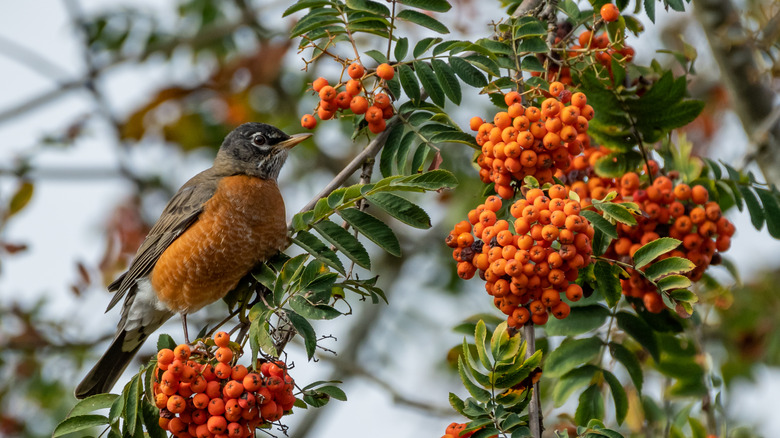The Low-Maintenance Ornamental Tree That Will Have Birds Flocking To Your Yard
When it comes to our yards, we want to have it all. We want to have a space that is welcoming, full of trees that are beautiful year-round, and if you are an avid bird-watcher, you will also want to integrate plants that will attract the winged critters. Luckily, there are some plants out there like the American mountain ash tree that do double duty. It is a beautiful tree throughout all seasons, blooming with white flowers in the spring that transform into vibrant berry clusters, highlighted by rich orange leaves in the fall. It is these berries that will have all kinds of birds flocking to your yard.
The tree's name is deceptive because it isn't an ash tree at all but rather a member of the rosaceae family. It is native to North America and is noninvasive, meaning you can plant it in your yard knowing that it will coexist well with your other flora. Keep reading to find out everything you need to know about how to care for this bird attracting tree (and — hint — it's really easy).
Why do birds love it?
Birds often have the luxury of choice when it comes to food sources during the spring and summer, with the grass full of insects and the trees full of berries. However, come the end of fall and early winter, birds have a harder time finding their next meal. Because the American mountain ash's nutrient-rich berries remain on the tree until early winter, far longer than other tree species, they provide a crucial food source when others are scarce.
This is especially important during the end of their fall migration, which can last until November. During migration, birds need extra fat and calories to help fuel their journeys, so the fruitful American mountain ash is an especially welcomed sight during these later months. The berries are a bright, vibrant red, which provides not only a pop of color in a drab winter garden, but a way to attract more birds to your garden because the berries will be easier to see.
How to care for an American Mountain Ash
For a tree that offers so many benefits, it is quite low-maintenance. It's native to the northeastern United States, grows best in cool climates, and thrives in damp, mountain forest regions. It will tolerate warmer climates, but it is best to avoid planting in regions with hot, humid summers or really dry soil. Instead, it loves an acidic, well-draining soil. They tend to have relatively shallow root systems, which means you don't have to worry too much about planting them above pipe infrastructure. However, if you live somewhere with frequent storms, consider planting a type of tree that does better in windy conditions.
To maximize the number of berries, try to plant the tree in full sun because it needs at least six hours of sunlight per day but will gladly enjoy more. It can tolerate partial shade, but more sunlight means faster growth. There is really no need to worry about fertilizing. You can keep this tree low-maintenance. If you live in a cooler mountain region, the tree can usually survive off of natural rainfall, meaning you don't even need to worry about watering. However, if you are growing it in a very suburban or dry environment, giving it some supplemental irrigation will keep it thriving.


